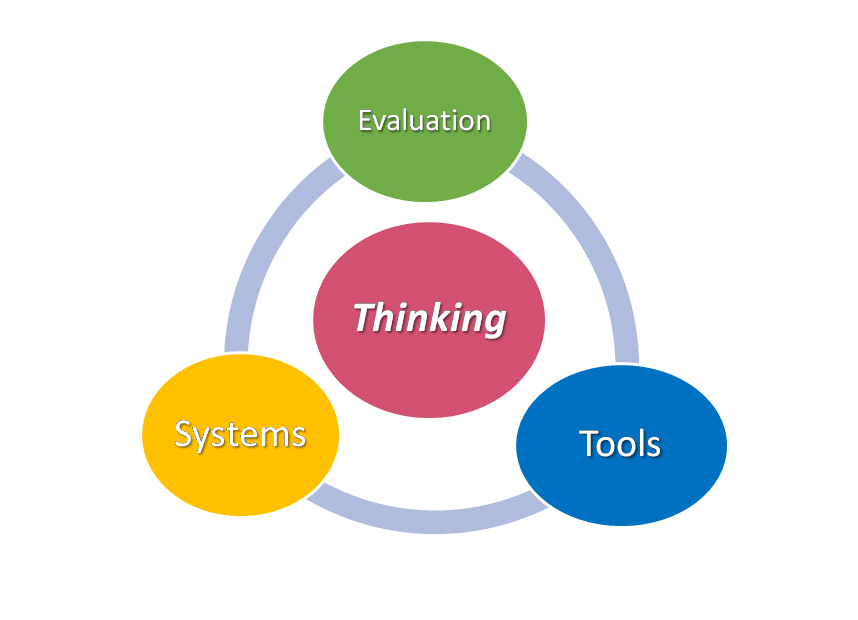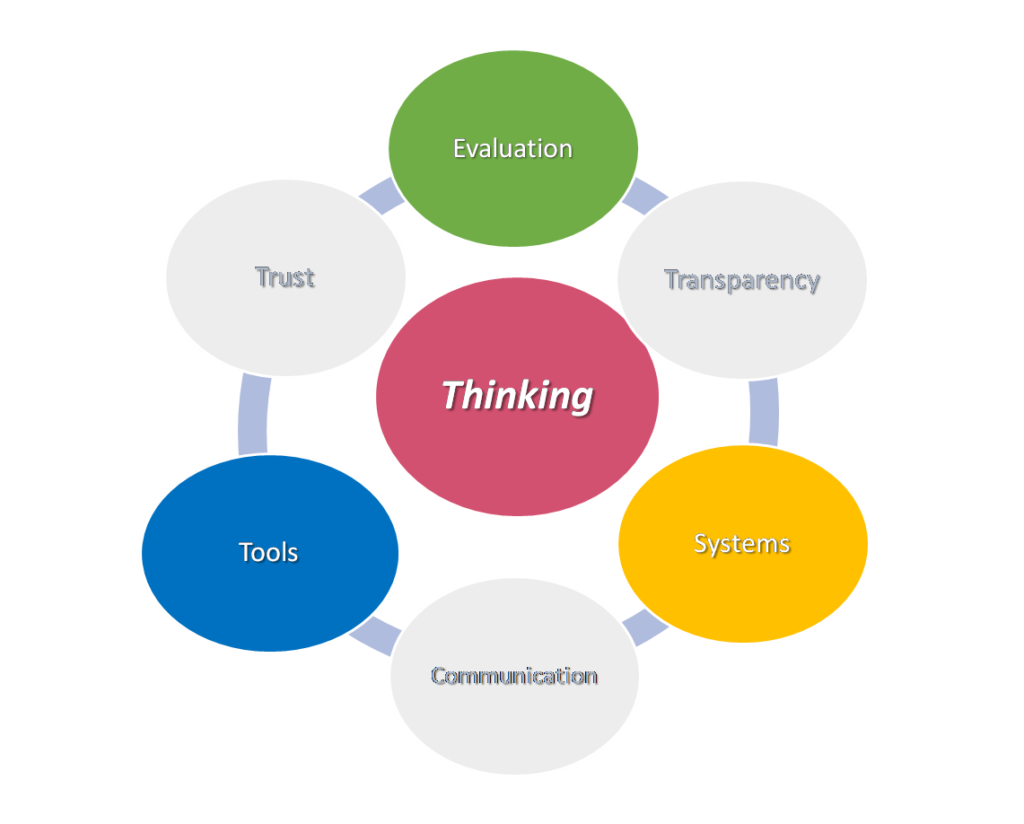Enabling Lean Operating Systems
For most of the 90’s I had the good fortune to consult with Chrysler Corp. working primarily on the implementation of the Chrysler Operating System (COS) which was led by Chrysler EVP, Dennis Pawley. During that same period, my future partner Jamie Flinchbaugh, was employed at Chrysler and instrumental in the design of COS. In 2001, I partnered with Jamie and Dennis to start the Lean Leaning Center (LLC) stimulated by our disappointment over the demise of COS after the Daimler “merger” and our curiosity with the challenge of sustaining lean operating systems. We learned from our COS experience that ANY sustainable operating system requires four elements: Tools, Evaluation (accountability), Systems (connecting each other-IT, HR and now digital) and Thinking. The heart and soul of a system is the thinking: those principles that drive the behaviors. More importantly, all elements must be completely aligned, no conflicting objectives. An operating system that rewards cost savings (evaluation) over employee/consumer safety (systems) is doomed to fail.

Although no longer associated with LLC, my fascination and study of operating systems, successful and unsuccessful, has not diminished. Over the years I have helped multiple companies design and implement operating systems some called OpEx Systems, Lean Operating Systems or company designated systems like COS at Chrysler or APS at Agco. Recently it became important that I better understand the Lincoln Electric Operating System. Lincoln Electric is the world’s largest designer and manufacturer of arc welding equipment and consumable welding products with roughly 50 plants in 19 countries and revenues close to $3bil. By all meaningful measures, Lincoln is wildly successful. Founded in 1895 by John Lincoln. John’s brother James joined the company in 1907 and in 1914 he introduced a series of management and human resource practices that is the foundation at Lincoln today. Many MBA students have studied the system. Harvard has published 6 case studies and a video on Lincoln since 1947. I had the opportunity to visit the Lincoln “mothership” in Cleveland, OH. To you give you a sense of the magnitude of these operations, the Cleveland campus is approximately 3mil sq.ft. of manufacturing and manufacturing support real estate including the corporate headquarters. The Ohio campus contributes to almost ½ of Lincoln’s total revenues. Generations of families have worked and are working in Cleveland, many with well over 35 years of service.
I had the opportunity to tour both the machine and consumables plants and spend valuable time with the leaders of each of those operations. However, my most enlightening experience during the visit was during the nearly 3 hours I spent with the Lincoln SVP and President of Cleveland Operations, Doug Lance. Doug has earned and been given the stewardship of the Lincoln mothership and the huge responsibility of sustaining the essence of the Lincoln Operating System while moving Cleveland toward more lean practices, a significant challenge. Doug is a very personable and articulate leader who obviously has a firm grasp of the Lincoln system and took me through a tutorial of the system. The system is complex but Doug made it easy for me to understand. I couldn’t haven’t asked for more and I am very grateful.
My fascination with Lincoln is twofold. First, this is a system that has been remarkably sustained for over 100 years, even after James died in 1995. Second, it’s a system that appears, on the surface, to be a bit of a paradox when compared to modern operating systems. The DNA of the Lincoln system is “pay for performance”. The base compensation for factory employees is based on piecework with a subsequent profit sharing bonus (Lincoln has paid bonuses every year since the inception of the program) based on a very specific and complex merit rating system. Salaried employees are also compensated based on merit. Considering the success and sustainability the Lincoln system, I thought I could neatly fit the Lincoln system into my model and paradigm of a successful Operating Systems. It doesn’t neatly fit.
Some of the elements of the model fit well, particularly the evaluation and HR systems. However, there are some elements of the models are not well represented in the Lincoln system. There are only the beginnings and a smattering of the tools for CI that I would normally expect to see. The principles of lean are not part of the day-to-day thinking and behaviors. Very little thinking focused on surfacing and solving the day-to-day problems, and experience is currently valued higher than standard work. I can make many additional comparisons and write a case study comparing the Lincoln Operating System to more modern Operating Systems, however the conclusion would be the same. The Lincoln system is working and the model and my paradigm is incomplete.
The effective and aligned execution of each of the elements of the model is the engine that drives an operating system. The enablers are the fuel for the engine. It’s the enablers that make the Lincoln system work. The combination of the elements and enablers would seem to make for the perfect Operating System, assuming there is any such thing.
The acts, activities and behaviors that enable the sustainability of the Lincoln Operating System are:
- The undisputed trust between management and the employees. It’s the glue that holds the Lincoln system together.
- Transparency of metrics and decisions (who, what and how).
- Mandated open communication. Challenge is welcomed and expected.
I don’t think the enablers are in the forefront of a successful and sustainable Operating System. They are the threads embedded in each of the elements, the threads that holds the model together.

My dad was a Lincoln devotee and as a welding foreman took the Lincoln supervisor course. I still have the 2 dozen training books from the 50’s, similar to the TWI methods in review. I even have the 1938 arc welding procedural manual (5th edition). I grew up on a Lincoln Buzz Box welding go-kart frames together. Later, I was a Lincoln disciple utilizing their products. After I went into management, I model our profit sharing program for workers and management after the “Lincoln Way”.
Andy, I found your story very accurate. The Lincoln Way works and though different than Lean as you pointed out, it is also complimentary. I found that you build similar cultures with empowering thinking at all levels throughout the organization. The mutual respect built into the Lincoln Way mad my transition to Lean Thinking a very natural progression.
I think it serves us well to note that we all do not to be “Lean” to be successful. I have said for a long time that your are not successful at Lean unless you stop calling it Lean and you call it your own. A great story to be told and the Lincoln Way just happened to have stated 50 years before TPS.